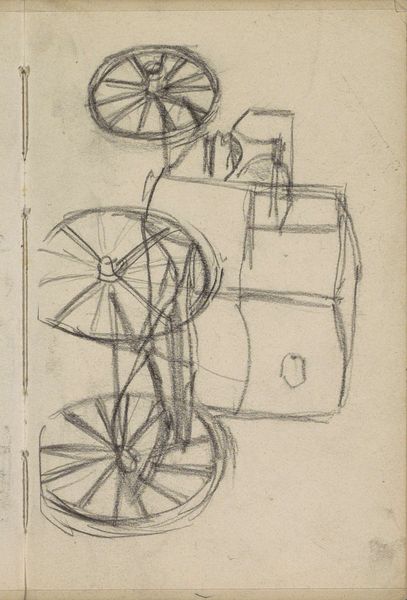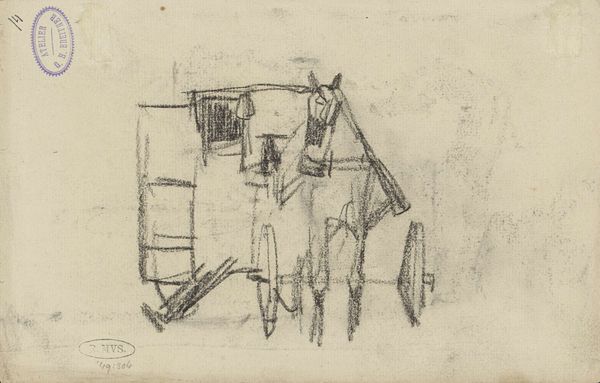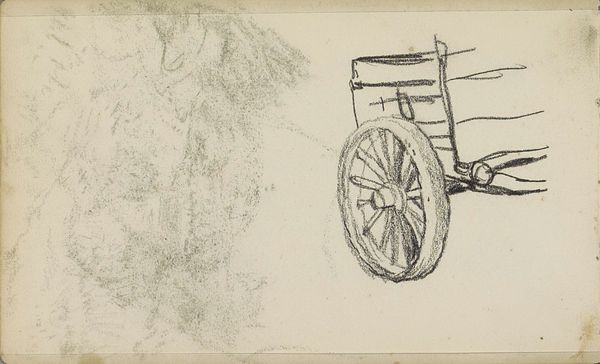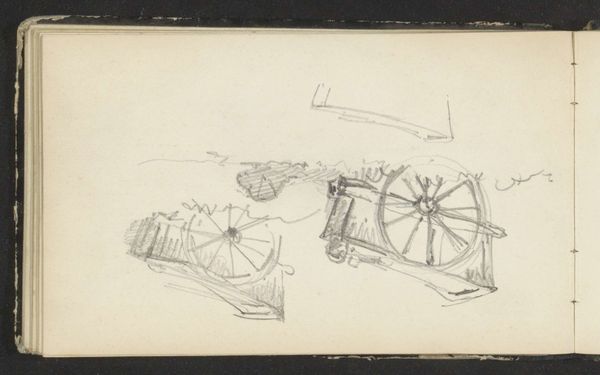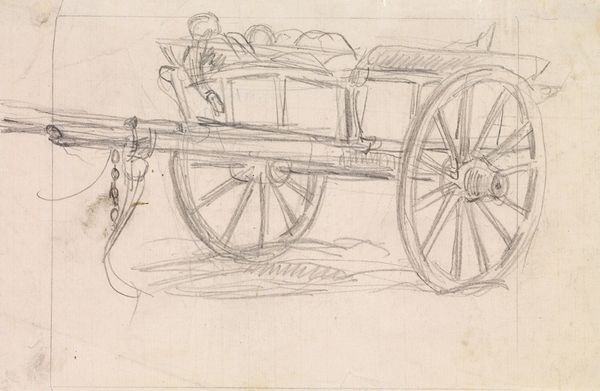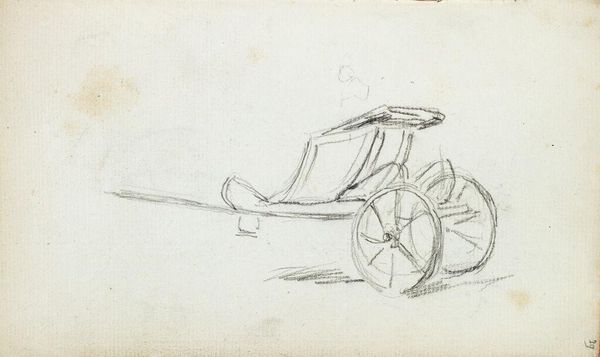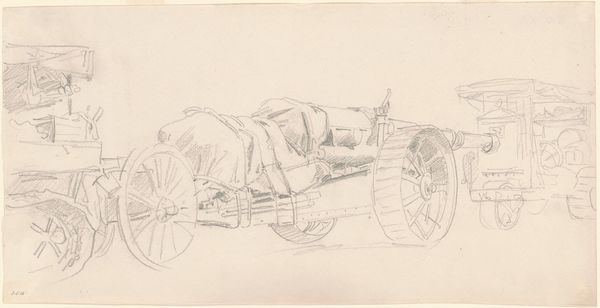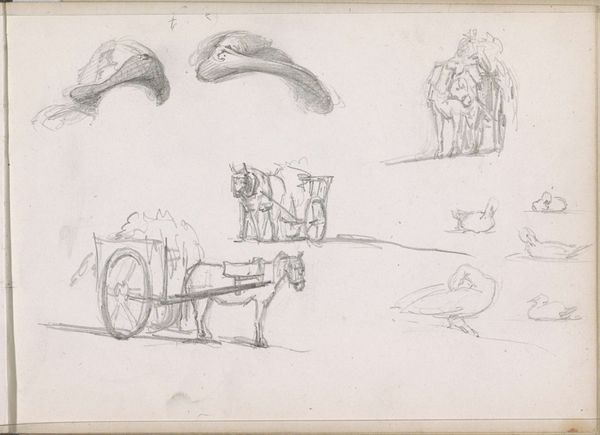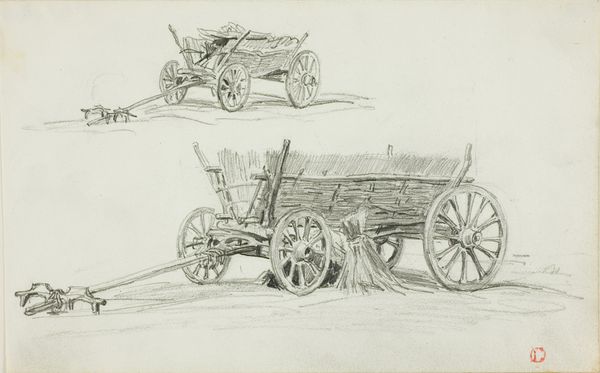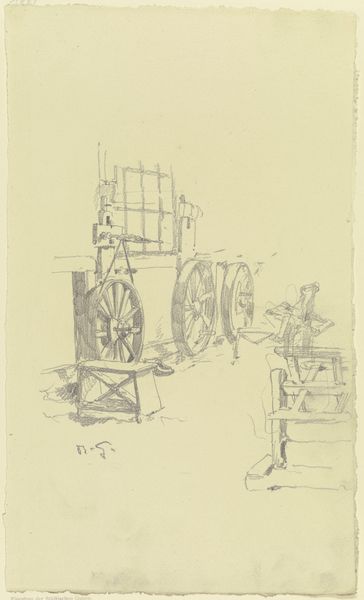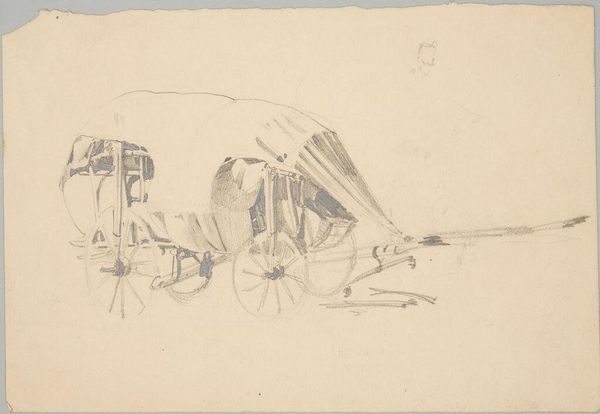
drawing, pencil, graphite
#
drawing
#
impressionism
#
landscape
#
pencil
#
horse
#
graphite
#
realism
Copyright: Rijks Museum: Open Domain
Curator: Willem Witsen's drawing, "Paard voor een rijtuig met twee wielen," which translates to "Horse Before a Two-Wheeled Carriage," sketched between 1888 and 1891, gives us a glimpse into everyday life through the lens of Impressionistic Realism. Editor: It has an unfinished feel to it. There's a sense of transience, like the horse and carriage are captured mid-motion. The sketchy quality, achieved through graphite and pencil, lends it a very immediate, almost journalistic feel. Curator: Witsen was deeply embedded in the cultural shifts of his time, and it is intriguing how he focused on ordinary scenes. This sketch really speaks to the changing urban landscape as Amsterdam rapidly modernized. One wonders who the people who were riding in that two wheeled carraige could be and why he wanted to draw it. Editor: Yes! It invites reflection on societal power dynamics. Who owned these carriages, who drove them, and whose lives were most impacted by this new urban reality that he captured. And if one considers that, back then, horses were also a major component to waste accumulation, then he might actually capture one of the starting point from a social problematic. Curator: Considering his associations with the Amsterdam Impressionists, this study also reflects the influence of their dedication to capturing the fleeting effects of light and atmosphere in everyday scenes. And even more, he captures his context by just focusing into a Horse and the wagon without actually having the need of focusing on people Editor: Definitely, and the limited use of materials creates an immediacy. It feels less posed, and more observed. It's a fragment of a bigger story and gives hints about class and work division Curator: Exactly! It’s in Rijksmuseum's collection because, even a quick drawing can capture an epoch in the history of a country. Witsen’s urban scenes are not just cityscapes; they're socio-historical documents. Editor: It is through this piece that we realize the true ability to reveal those deeper textures of life and the era, using the streets and figures as tools for this purpose.
Comments
No comments
Be the first to comment and join the conversation on the ultimate creative platform.
